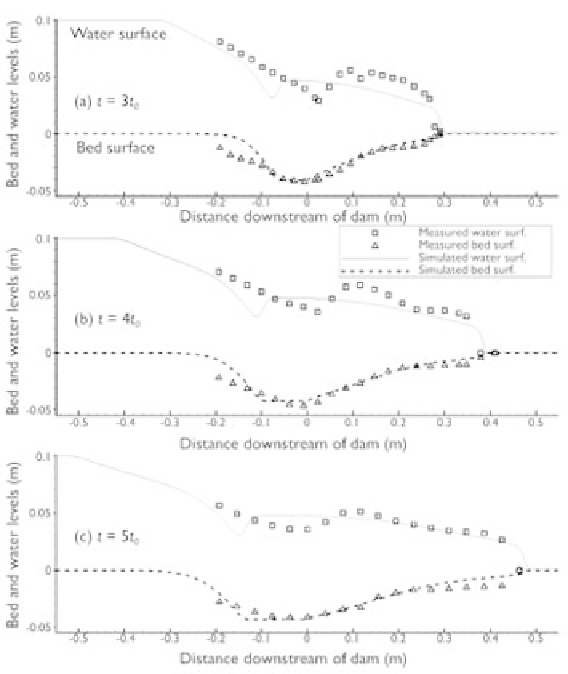Geoscience Reference
In-Depth Information
having a diameter of 3.2mm, a height of 2.8mm (hence an equivalent spherical diam-
eter of 3.5mm), a density of 1540 kg
s
−
1
.
The test reach in the Taipei experiment was 1.2m long and 0.2m wide, and in the
Louvain experiment was 2.5m long and 0.1mwide. In both experiments, the upstream
initial water depth,
h
0
, was 0.1m.
In the numerical simulations for both experiments, a uniform mesh with a grid
spacing of 0.005m was used, and the time step was 0.001
t
0
. Here,
t
0
m
−
3
, and a settling velocity of about 18 cm
·
·
2
is
the hydrodynamic time scale and has a value of about 0.101 s. To handle the dry-bed
problem, an initial flow depth of 0.0005m was set in the downstream of the dam.
The sediment porosity was estimated as 0.28 and 0.3 for the Taipei and Louvain tests,
respectively, using Eq. (2.20). The bed-load adaptation length
L
b
was given as 0.25m.
The Manning roughness coefficient was set as 0.01 for sidewalls and 0.025 for the
flume bed in both test cases.
According to initial trials using the original van Rijn (1984a & b) sediment trans-
port capacity formulas, the numerical model significantly under-predicts bed erosion
in both cases. With the modification described in Eqs. (9.63) and (9.67), it performs
1
/
=
(
h
0
/
g
)
Figure 9.10
Bed and water surface profiles in Taipei case (Wu and Wang, 2007).

